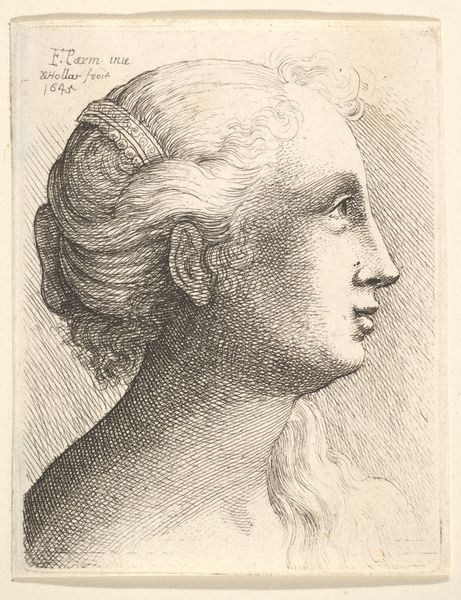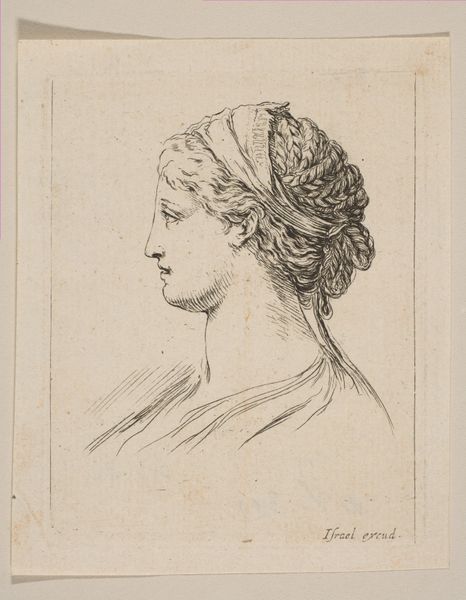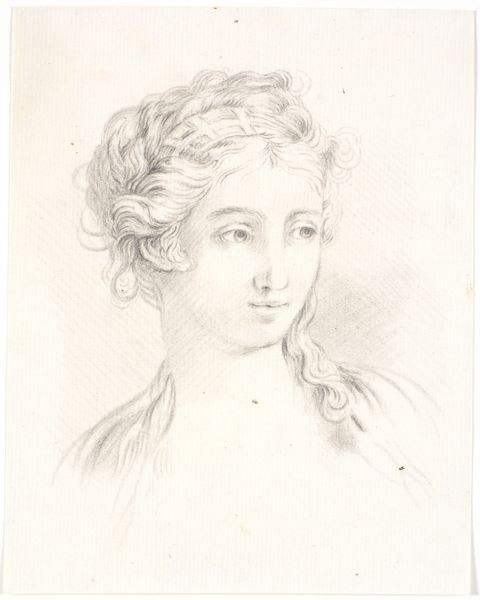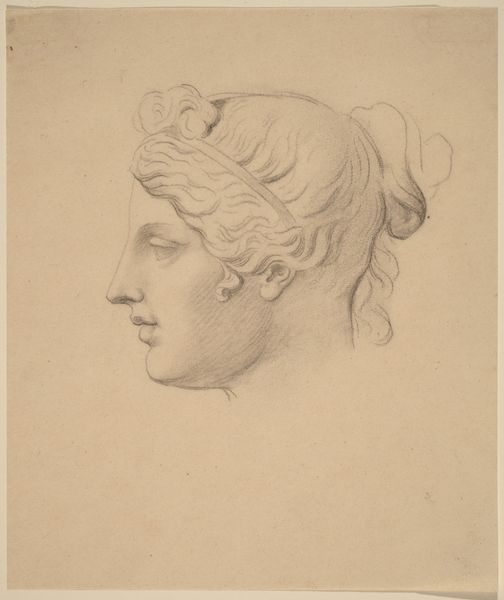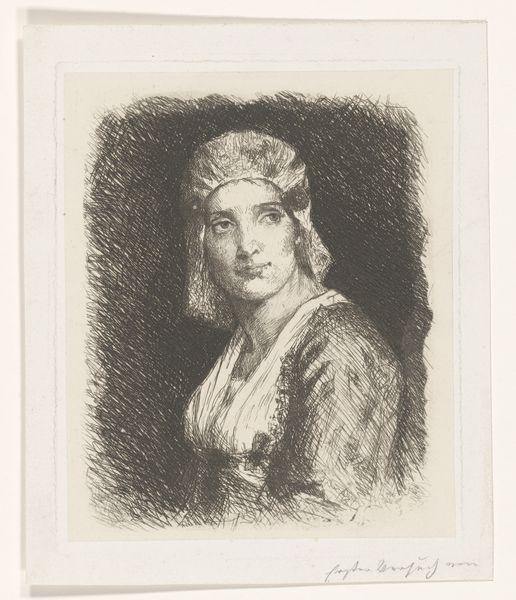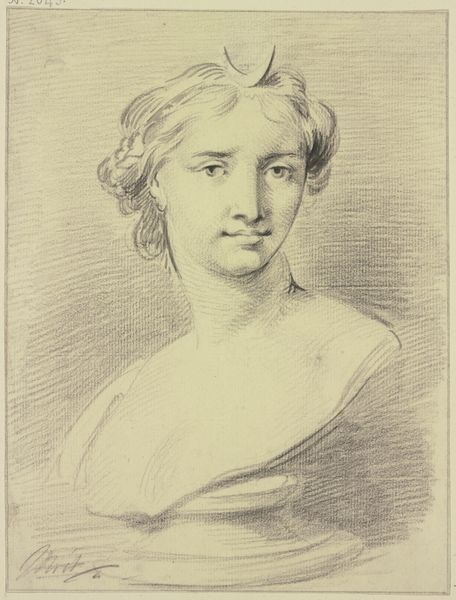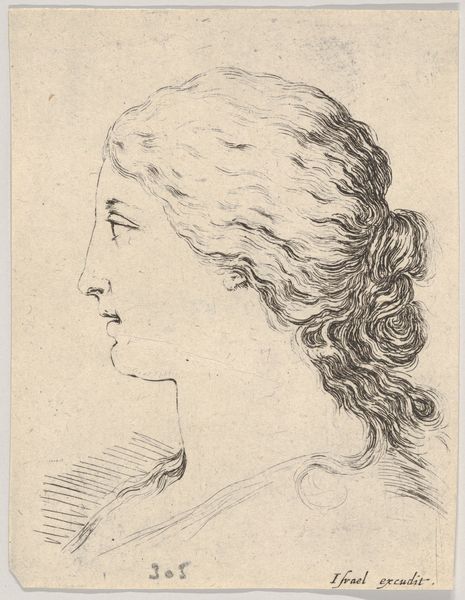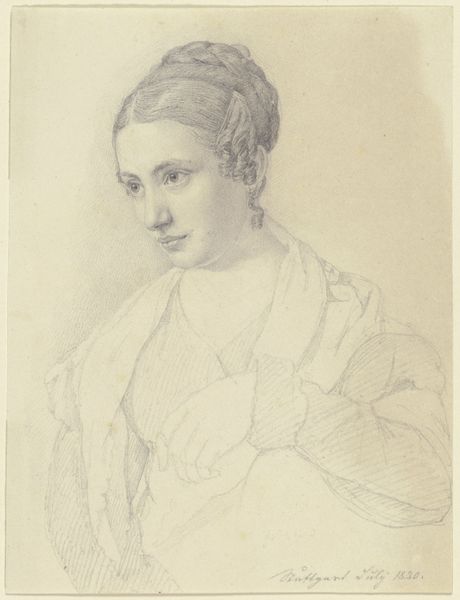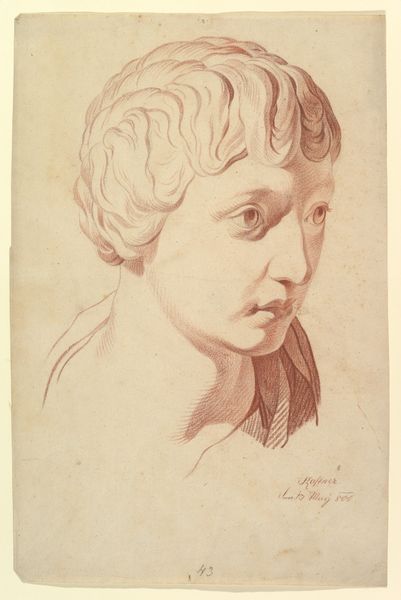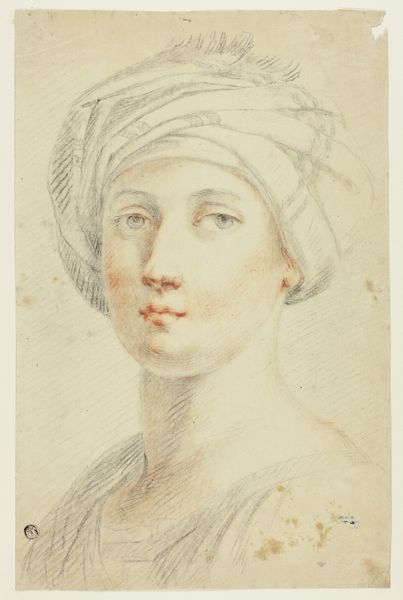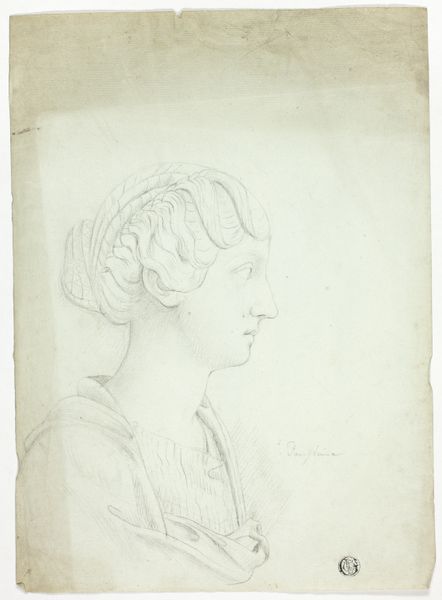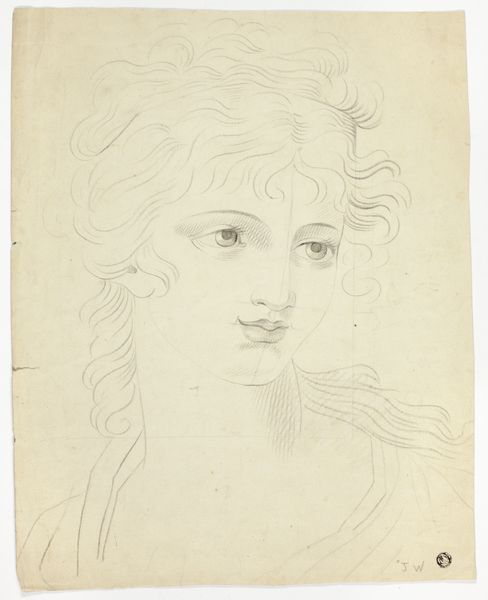
drawing, print, paper, pencil
#
portrait
#
drawing
# print
#
classical-realism
#
figuration
#
paper
#
form
#
pencil drawing
#
pencil
#
portrait drawing
#
academic-art
#
portrait art
Dimensions: 273 × 197 mm
Copyright: Public Domain
Curator: Welcome. We’re standing before “Bust of Roman Matron,” a drawing held at The Art Institute of Chicago, of indeterminate date, by an anonymous hand. It appears to be made with pencil on paper. What are your first impressions? Editor: Stark, almost austere. The lines are so precise, yet the overall effect is strangely soft, almost ethereal. There's a vulnerability in her gaze, despite the classical rigidity of the pose. It strikes me how, even in what feels like a very objective portrait, there’s an echo of how women are forever being observed and appraised, their identities scrutinized under layers of expectation. Curator: Indeed. Note how the artist employs delicate shading to define the contours of her face. It’s particularly striking in the treatment of the nose and lips, rendered with a subtle realism. And what do you make of the hair? It seems intricately styled, almost like a woven crown. The handling of form here displays such an impressive knowledge of anatomy and structure. Editor: It's that structured hair that reinforces this notion of formality and control. Think about the social structures dictating the lives of Roman matrons; these visual elements are representative of these unspoken and often stifling roles. In looking closer, I am thinking about what wasn’t permitted of Roman matrons; these idealized drawings of "acceptable" women mask a real gendered social hierarchy. The visual form works to naturalize this rigid societal division. Curator: That’s an interesting reading. I see a focus, instead, on achieving a purely aesthetic ideal, emphasizing harmony and balance through meticulous draftsmanship. Note, too, the slight asymmetry which keeps it from becoming simply academic, while the line work itself transcends mere representation. It invites the viewer to reflect upon beauty itself, as an autonomous concept, beyond the identity it supposedly captures. Editor: And I contend that we can't separate an artwork, especially one dealing with identity, from its potential cultural, societal impact, even centuries after its creation. It demands conversation, and, hopefully, action. Curator: That's a perspective that provides fertile ground for further inquiry; an ongoing investigation of the piece. Editor: Agreed, because that allows us to ask fresh questions of works often considered "resolved," potentially revealing unseen layers in their dialogue with history.
Comments
No comments
Be the first to comment and join the conversation on the ultimate creative platform.
